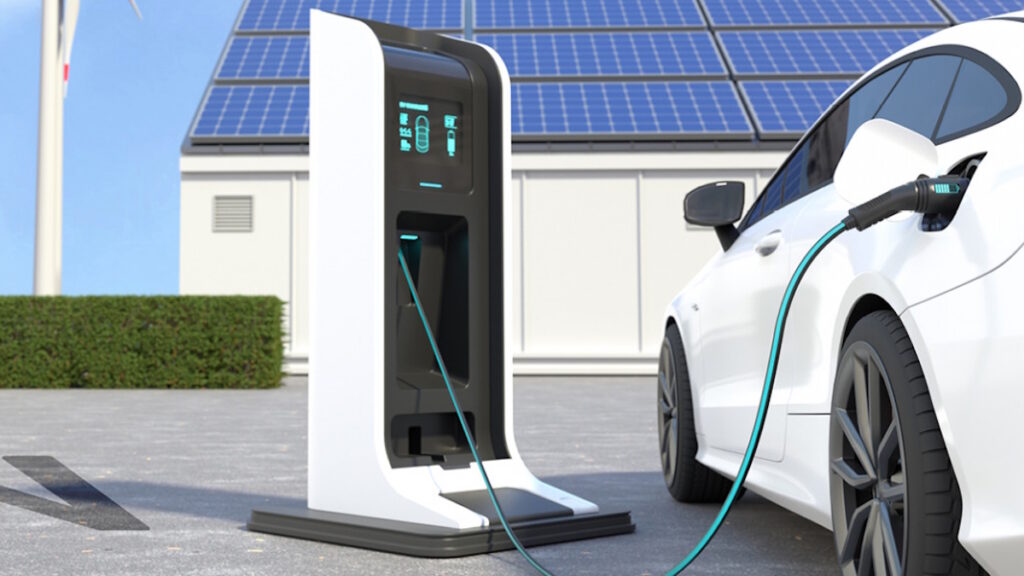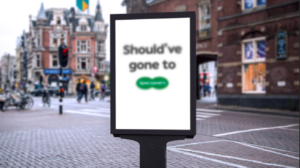The drive toward a sustainable future has resulted in increased usage of electric vehicles (EVs) and their charging stations across Europe. There were 40,150 public electric vehicle charging stations in the UK as of 1 April 2023, the newest of which have screens presenting an exciting new opportunity for advertisers to connect with their target audience.
Samsung Display Solutions is one of those pioneering in the integration of personalised displays within charging stations, as more and more people opt for EVs as their primary mode of transport.
New Digital Age sat down with Henrik Hansen, Business Development Manager, EDO for Samsung Electronics Europe, to talk about the future of EV charging stations in advertising and how Samsung is working closely with retailers to deliver personalised and general displays.
Hansen has been working with retail customers in the AV and digital business for 20 years and became engaged with EV chargers when approached by one of Samsung’s regular retail customers hoping to utilise the new technology for advertising purposes. The customer already used Samsung displays in its facilities and was due to install EV chargers in the parking lot. It recognised there was a de-facto relationship between a shopper’s likelihood to plan their trip around where they can charge their car and the opportunity to begin their customer journey early through exposure to ads while they park their car.
“The customer journey is where you get your five seconds to influence the customer’s decision ultimately. You could be parking your car and see an ad without even paying much attention but, when you are in a facility with a large selection of shops and products, you will pick one over another simply because you saw it advertised in the car park,” Hansen explains.
The Samsung displays integrated into the EV chargers vary in size, depending on their purpose. The full outdoor sizes are also high brightness displays. They are insulated for outdoor usage, and they come with a special protective glass, enabling people to view content even with their sunglasses on. Smaller displays often cater for personalised advertising or user information, while the bigger ones are used for many different kinds of advertising.
Speaking on how personalisation works with EV charger displays, Hansen says there’s a lot you can target “simply by looking at the model, the make, the age and the price of the car – all fully within the GDPR.
“You will enter the facility in your car and the camera will read and recognise your licence plate. It will look up your car in the register and find its list price. In some regions, if it is listed at a new price higher than 80,000 euros, you will be categorised as a certain type of customer and it will advertise a high profile credit card for wealthy individuals.
“After looking up your car, it can also provide an offer for insurance checks on your car,” Hansen continues. “When did you last check the cost of insurance on your car? Would you opt to receive offers for the insurance of your nice Tesla 3?
“In some countries, particularly in northern Europe, there are regulations to change to winter tires, and it can give you a notice with good offers for changing these.”
When users connect their EV to a charger for the first time, there is a need for simple, effective guidance, so Samsung works with its manufacturers to deliver this information via digital display. On top of this, professional advertising companies can buy time slots on the displays, the revenue from which Hansen argues is essential for meeting the target of 6.8 million chargers built before 2030.
When asked about his hopes for the future of EV chargers and the digital displays, Hansen considers the possibility of a regulation where newly established parking lots have a minimum of 5% parking spaces equipped with EV chargers.
“I hope we can play a role in aiding users in a smoother transition towards electric cars, making them feel comfortable connecting and plugging in a new EV because they get a clearer message on the digital screen. That is our ambition.”









